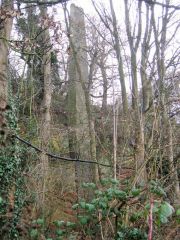Eardington Forges


near Bridgnorth, Shropshire
The following information is condensed from an article by Norman Mutton[1]
There were two forges, Upper Forge and Lower Forge, 3 miles south of Bridgnorth. The Upper Forge was served by a pool formed by damming the Mor Brook. The 30-yd long masonry dam formed a weir 15 ft above the natural water level. Water flow to the waterwheels was controlled by a pair of cast iron sluices designed by John Urpeth Rastrick and built by Foster, Rastrick and Co at the Stourbridge Foundry in 1820. The tail race fed a canal connecting the Upper Forge to the Lower Forge (adjacent to the River Severn). The canal went under the adjacent road, and after about 150 yds it entered a tunnel cut through sandstone, 9ft wide and 6ft high. As well as feeding the waterwheel(s) at the lower forge, the canal was evidently used for navigation, and contained a cavern with a rough platform. It ends abruptly in a cliff face about 30 ft above the river.
The forges produced fine charcoal iron for gun barrels, wire, and horsehoe nails between 1777 and 1889. They were established by brothers William Wheeler and John Wheeler. The Lower Forge was built c.1782. The forges were owned by John Bradley and Co from 1809.
The Severn Valley Railway sited Eardington Halt to serve the forges, rather than the villagers.
Mor Brook Iron Bridge is a short distance to the south.
See Also
Sources of Information
- ↑ 'Eardington Forges and Canal Tunnel' by Norman Mutton, Industrial Archaeology 1970, Vol 7: David & Charles, 1971

